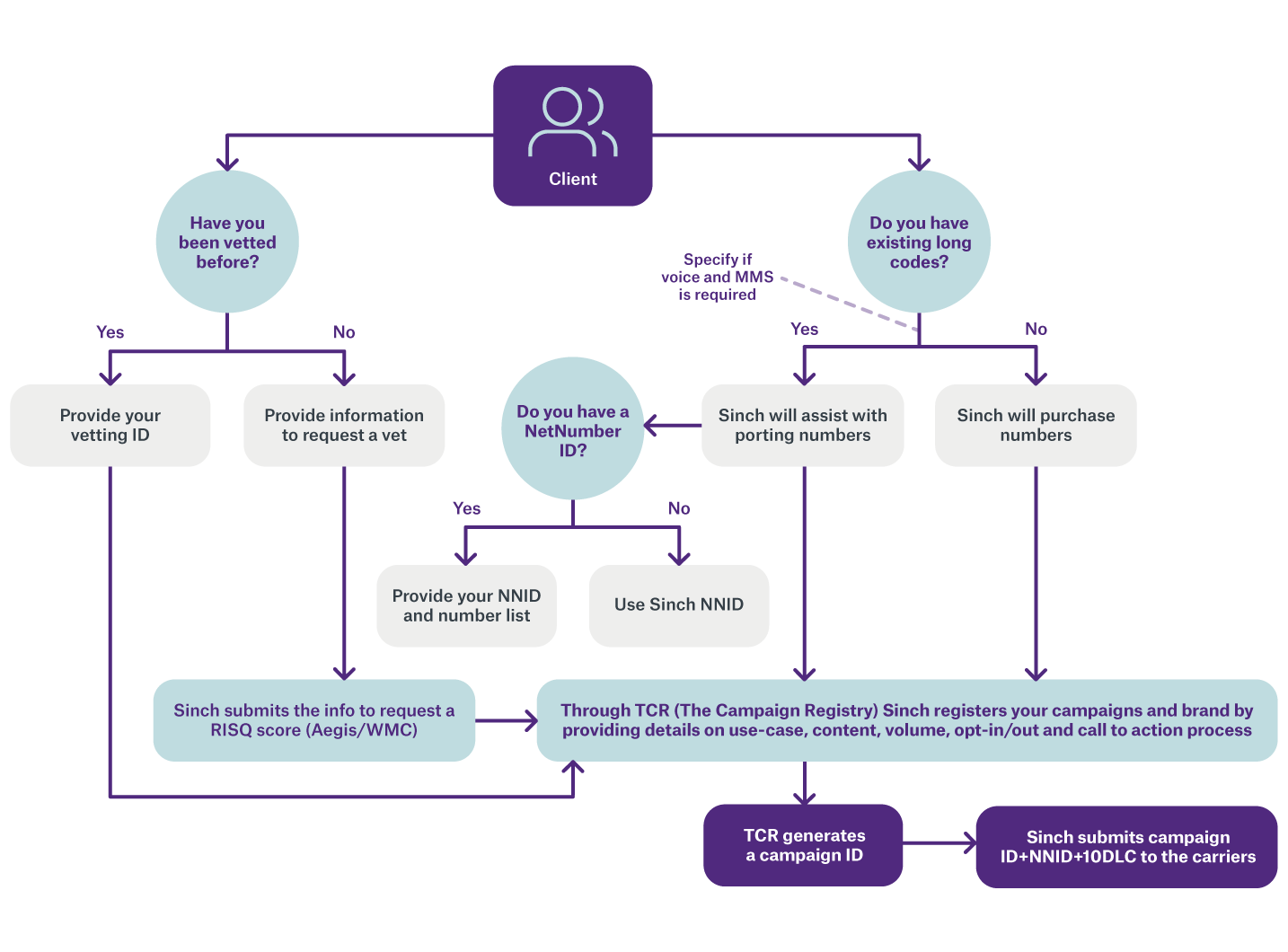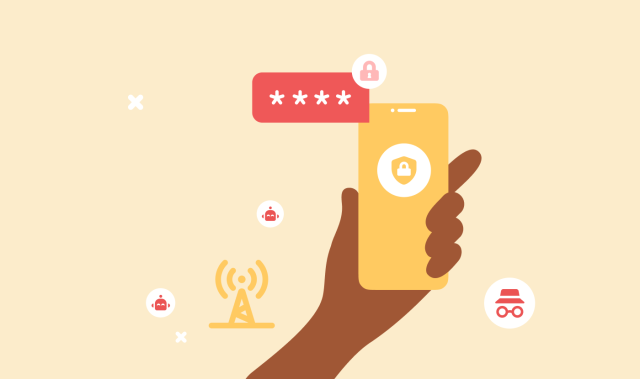In this article:
- The growth of A2P text messaging
- What is 10DLC?
- Getting started with 10DLC conversation messaging
- What should I expect next with 10DLC?
- What steps do I need to take to start using 10DLC?
- Registering brand information
- Registering campaign information
- A step-by-step guide to 10DLC messaging
- Partnering with Sinch on 10-digit long codes
The growth of A2P text messaging
A lot has happened in the world of messaging over the last few years. The dramatic shift from a phone call to reach a client, to sending a text message, has seen many businesses and organizations turn to SMS to reach audiences in ways that, let’s face it, are just more convenient and effective.
Every day at Sinch, we see new and creative ways to use Application-to-Person (A2P) messaging to connect and engage. But while use cases have grown continuously and evolved, the messaging services that support them have not. That’s all about to change with 10DLC (10-Digit Long Code).
An update to the CTIA cross-carrier guidelines & carrier-specific messaging playbooks will be released soon to outline further content guidelines for both short codes and 10 digit senders, so watch this space for more information.
What is 10DLC?
In short, 10DLC are local 10 digit, voice, and MMS capable non-wireless local numbers. We covered more details on this in some previous blog posts, and we also ran a webinar. Check them out for the full story on 10DLC; what they are, why they’re such a hot topic in the US right now, and the difference between toll-free numbers, long codes (or long numbers), dedicated shortcodes, and shared shortcodes.
We’ll be skipping straight to the nitty-gritty on steps you need to take to start using 10DLC and how Sinch can support you in getting up and running for this blog post.
Getting started with 10DLC conversation messaging
Join us in this on-demand webinar 10DLC: the new standard in business messaging for updates on the status of 10DLC, tips on best practices, and how to move your messaging campaigns to 10DLC. Fill in the form above to get your webinar recording.
What should I expect next with 10DLC?
Wireless carriers will eventually start blocking P2P long codes and shared short code traffic. We expect a grace period after the carriers go live, but our advice is to start preparing for the switch as soon as possible if you are still using shared short codes or running 10 digit SMS over local number.
If you want to be among the companies getting early access to long codes, head over to our A2P 10DLC messaging product page!
What steps do I need to take to start using 10DLC?
It’s a simple two-step process: You need to register your brand and then register the campaign you’d like to run. To be clear, one brand can have multiple campaigns, each one can only belong to one brand, but each customer can have multiple brands. All brands and campaigns will be registered on TCR (The Campaign Registry) which is the official 10DLC registry platform. TCR provides the campaign details to the carriers and generates the campaign ID which is needed to route 10DLC traffic. You can bring your numbers or if you don’t have any, Sinch can order and purchase them for you.
Let’s take a closer look at each step.
Registering brand information
Brand data consists of information about the company that owns the rights to the brand: the name of the brand, address, and contact details. Sometimes, it’s necessary to provide more specific information, like tax ID and stock symbol. Each brand needs to be approved before they can start sending.
Vetting is required for brand verification purposes. This process uses an external partner and is essential in confirming the brand and intended aggregator ID. Security is key.
When brand registration is complete, the next step is creating a campaign.
Registering campaign information
For every type of A2P messaging planned, brands need to submit their details and get the campaign approved by the carriers.
Carriers require specific information to help with this process, such as the campaign type and use case, an example of the messages planned, whether the message will include a link, and the opt-out options.
Any new type of A2P messaging requires a new campaign, but there’s plenty of benefits to be gained if you put the work in to get a campaign registered:
- Brands can host their pool of dedicated numbers (no more snowshoeing/rotation!)
- Promotional and marketing content will be supported (limited carrier filtering)
- Based on their trust score, brands can expect much higher throughput per second on each campaign, per carrier
- 10DLC will support voice and MMS
- Provisioning will be fast (1-3 days)
It’s important to note that any violations of the submitted and or approved campaign data could result in carriers revoking both the brand and the campaign.

A step-by-step guide to 10DLC messaging
Download our free guide for everything you need to know on building a successful A2P 10DLC strategy.
Partnering with Sinch on 10-digit long codes
We’ve got years of experience in the messaging industry and have all the tools needed to help you succeed when it comes to making the transition from shared short codes to 10DLCs.
Work with the experts to:
- Reach customers over trusted and secure channels every time, thanks to direct connections with ALL Tier 1, 2 and 3 carriers in the US, and over 350+ carriers globally.
- Join the ranks of over 1,000 global enterprise customers, including 8/10 of the largest US tech companies who trust us to deliver over 40 billion transactions a year.
- Take advantage of our global connectivity and carrier-grade platform, set to handle vast traffic volumes – anything up to 1 billion SMS transactions a month per customer.
- Keep it secure. We take security seriously and have implemented sophisticated measures to ensure that data is protected – we’re ISO 270001 certified.



